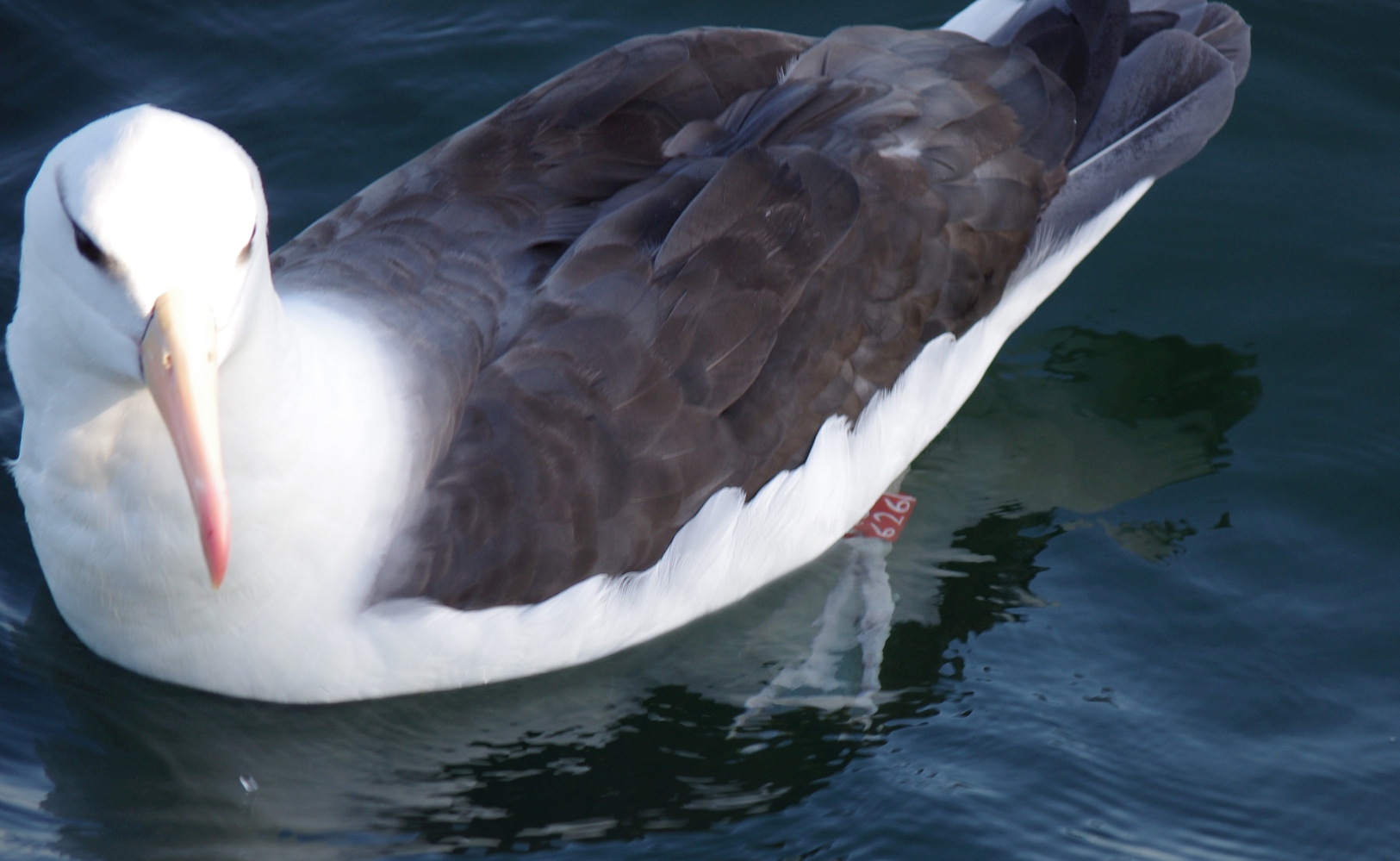 Black-browed Albatross at sea; photograph by Kollette Grobler
Black-browed Albatross at sea; photograph by Kollette Grobler
Tim Guilford (Department of Zoology, University of Oxford, UK) and colleagues have published in the journal Current Biology on Black-browed Albatrosses Thalassarche melanophris diving actively to depths of as much as 19 metres.
The paper’s abstract follows:
“Albatrosses are the iconic aerial wanderers of the oceans, supremely adapted for long-distance dynamic soaring flight. Perhaps because of this they are considered poorly adapted for diving, in contrast to many smaller shearwater and petrel relatives, despite having amphibious eyes, and an a priori mass advantage for oxygen-storage tolerance. Modern biologging studies have largely confirmed this view casting doubt on earlier observations using capillary tube maximum depth gauges, which may exaggerate depths, and emphasising albatrosses’ reliance on near-surface feeding. Nevertheless, uncertainty about albatross diving remains an important knowledge gap since bycatch in human fisheries (e.g. birds becoming hooked when diving for longline bait fish) is thought to be driving many population declines in this most threatened group of birds. Here we show, using miniature electronic depth loggers (TDRs), that black-browed albatross, Thalassarche melanophris, can dive to much greater depths (19 m) and for much longer (52 s) than previously thought — three times the maxima previously recorded for this species (6 m and 15 s), and more than twice the maxima reliably recorded previously for any albatross (from 113.7 bird-days of tracking). Further evidence that diving may be a significant behavioural adaptation in some albatrosses comes from co-deployed 3-axis accelerometers showing that these deeper dives, which occur in most individuals we tracked, involve active under-water propulsion without detectable initial assistance from momentum, sometimes with bottom phases typical of active prey pursuit. Furthermore, we find (from co-deployed GPS) that diving occurs primarily in the distal portions of long-distance foraging trips, with deeper dives occurring exclusively during daylight or civil twilight, confirming the importance of visual guidance.”
Read a popular account of the publication here.
Reference:
Guilford, T., Padget, O., Maurice, L. & Catry, P. 2022. Unexpectedly deep diving in an albatross. Current Biology. doi.org/10.1016/j.cub.2021.11.036.
John Cooper, ACAP Information Officer, 10 February 2022

 English
English  Français
Français  Español
Español